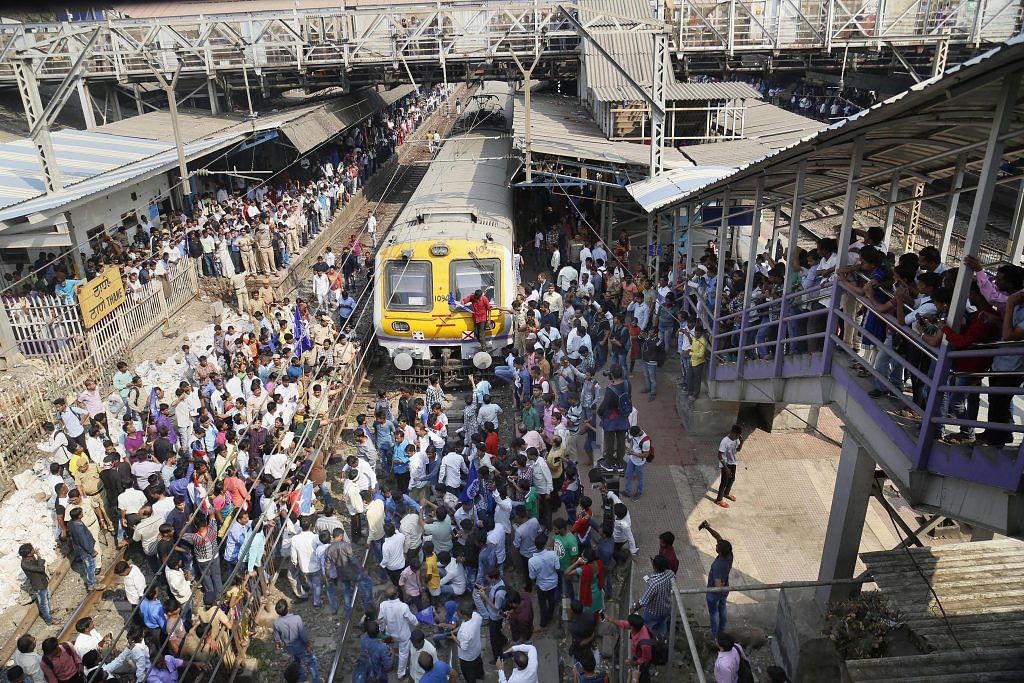The Right wing has perfected their playbook of oppression both on-ground and online. Koregaon shows that Dalits have caught on.
The events that have unfolded since the Dalit commemoration at Bhima Koregaon on 1 January, have been mostly predictable and not entirely unexpected.
It’s no secret that the past few years have been especially hard for Dalits with crimes and atrocities against them increasing by an overwhelming 66 per cent since just 2007. So it makes obvious sense for a crucial Dalit celebration, one which Ambedkar memorialised by first starting the annual pilgrimage to Bhima Koregaon on 1 January 1927, to also become an event to reclaim Dalit pride and strengthen political affiliations. The historic 200-year-old battle, which is controversial in academic history, has been preserved as part of alternate Dalit history for decades.
The idea of Dalits celebrating a battle where outnumbered Mahar soldiers defeated the brutally casteist Brahmin Peshwas, in the very heart of Peshwaland, was clearly an insult to their descendants’ ‘upper’ caste pride. Scroll reported that Uday Singh Peshwa and the Akhil Bharatiya Brahmin Mahasangh, among others, urged the Pune police to deny permission for the event and labelled it, and the Bhima Koregaon commemoration — it has occurred peacefully for decades — as ‘anti-national’. Eventually, its organisers, the Bhima Koregaon Shourya Diwas Abhiyan, secured the permission for the event.
But if the gatherings of Dalit political and social assertion in the past have taught us anything, it was that violent ‘upper’ caste retaliation was just lurking around the corner. Be it the Dalit Asmita Yatra in 2016 where returning Dalits were attacked, or the Mahad Satyagraha in 1927, where Ambedkar led thousands of Dalits to drink water from a public water tank after which ‘upper’ castes attacked Dalits, they have always been ‘punished’ for showcasing pride.
So, in an almost scripted repeat of these previous events, as Dalits returned from Bhima Koregaon Monday, men carrying saffron flags attacked them viciously. They threw stones, shattered car windows and set vehicles on fire. Twenty-eight-year-old Rahul Phatlange died, while several Dalits were injured and over 40 vehicles were damaged. The remaining Dalits in the mostly ‘upper’ caste village are now fleeing their homes anticipating more such attacks.
Despite the severity of the attacks, most mainstream media organisations and television channels saw no merit in reporting it, just like they have ignored reporting on most Dalit atrocities in the past. So, Dalits naturally turned to the only way we have — through protests. As soon as Dalit protesters blocked roads, shut down shops and brought Mumbai and the rest of Maharashtra to a standstill, mainstream media suddenly noticed how ‘mobs have held the city to ransom’ — again, typical of their biased reporting on Dalit issues over decades. Most newspapers focused on how their protests were an inconvenience but hardly addressed the details or their context.
There was nothing new about the grossly privileged reactions of ‘upper’ caste Mumbaikars either, who were angry about how Dalits were placing ‘self interest’ over that of the nation. Or how the ‘common man’ loses their livelihood in a protest without even acknowledging the common Dalit who had lost his life. The political parties, their trolls, and their mouthpieces masquerading as news channels also dusted their old excuse from Rohith Vemula’s death that when Dalits call for attention to the violence they face because of their caste, they are actually ‘dividing the nation’ and ‘Breaking India’.
‘Why can’t they just shut up and suffer in silence like they have for thousands of years,’ seems to be the flagrant yet tired logic at work. The naysayers clearly had no interest in why or how protests have become the only way for Dalits to make themselves heard.
And since Dalits show no signs of giving up on their pride and assertion, it’s likely these ‘upper’ caste, privileged forces will react in the same way again, just with different postcodes and players. Except this time, there is one minor difference. If the Right wing has perfected their playbook of oppression both on-ground and online, Dalits have caught on as well. Unlike in the past, this time Dalits (and their allies) were prepared to fight back. Their arguments were sharper, their reasoning clearer and Dalits in particular were able to excellently articulate why they need to stand up for themselves. Radhika Vemula, Rohith Vemula’s mother, emerged as a formidable Dalit leader when she strongly argued how the media has repeatedly let Dalits down, focusing on the blockades and traffic jams after protests but ignoring the actual atrocities.
Even as the mainstream media snubbed the attacks, many online publications, including this one, produced several well-reported pieces tracking down the finer details of the events. While the forces controlling the saffron-flag bearing attackers clearly wanted to clamp down on Dalit pride, they ended up further pushing it into national spotlight.
From a community-specific event, Bhima Koregaon commemoration is set to turn into a national Dalit memorial next year. The ‘upper’ caste violence and reactions might be the same but like a quickly adapting powerhouse, Dalit response to it is evolving each time they occur. That itself is a lot to hope about.
Yashica Dutt is a New York-based writer and journalist who is about to publish a non-fiction book on growing up ‘lower’ caste in India. She has worked as a Principal Correspondent for Hindustan Times and is the founder of Documents of Dalit Discrimination Tumblr.
